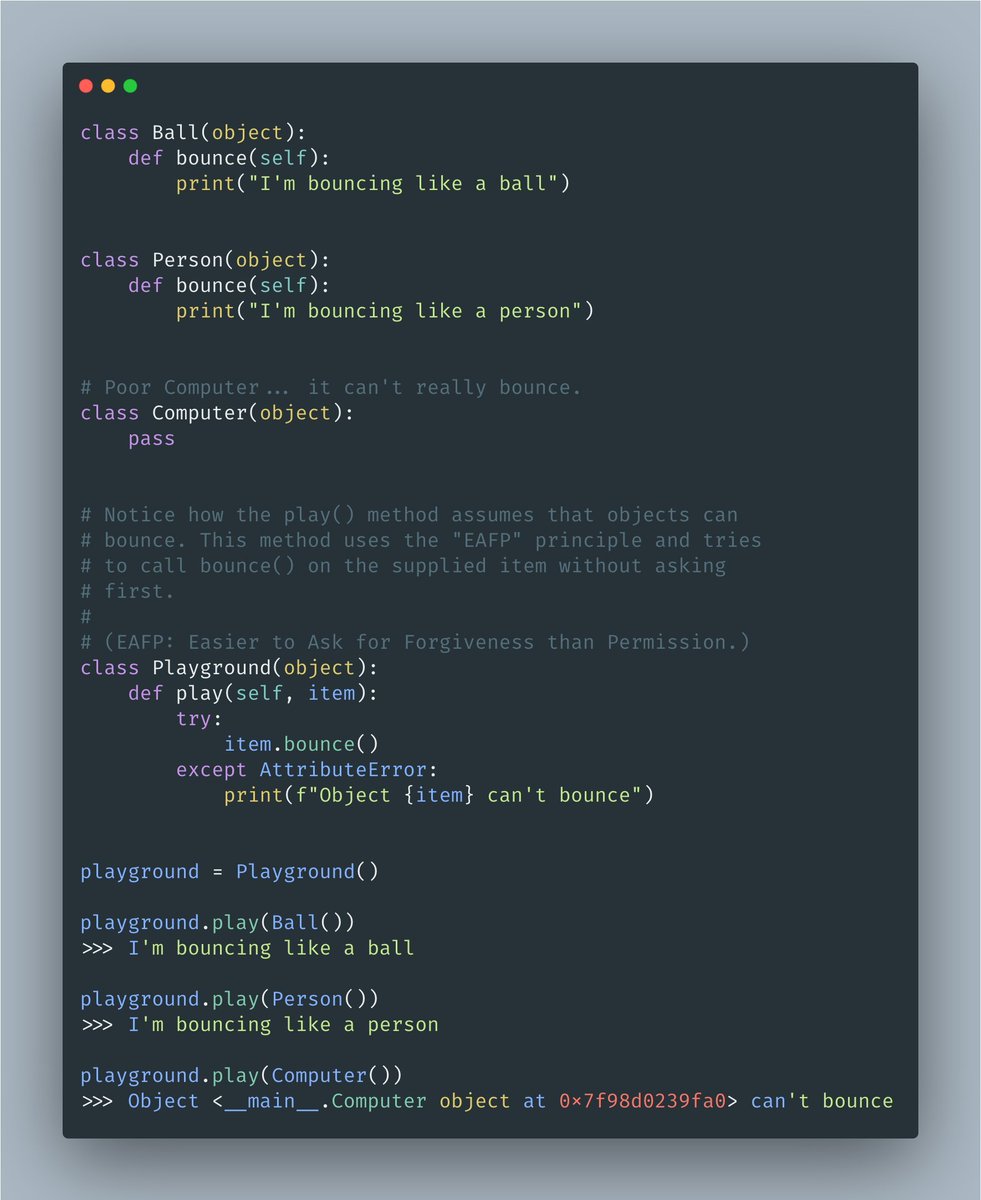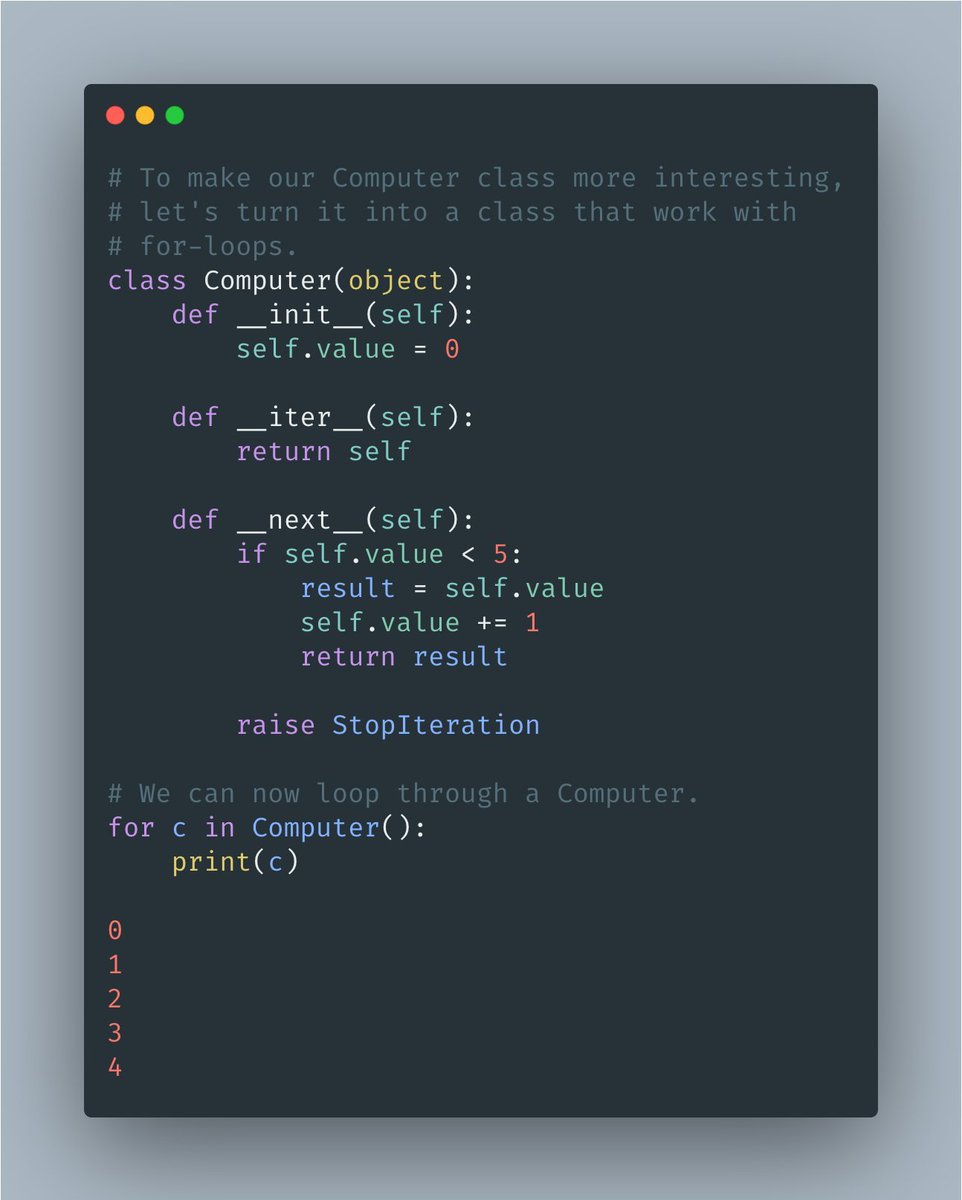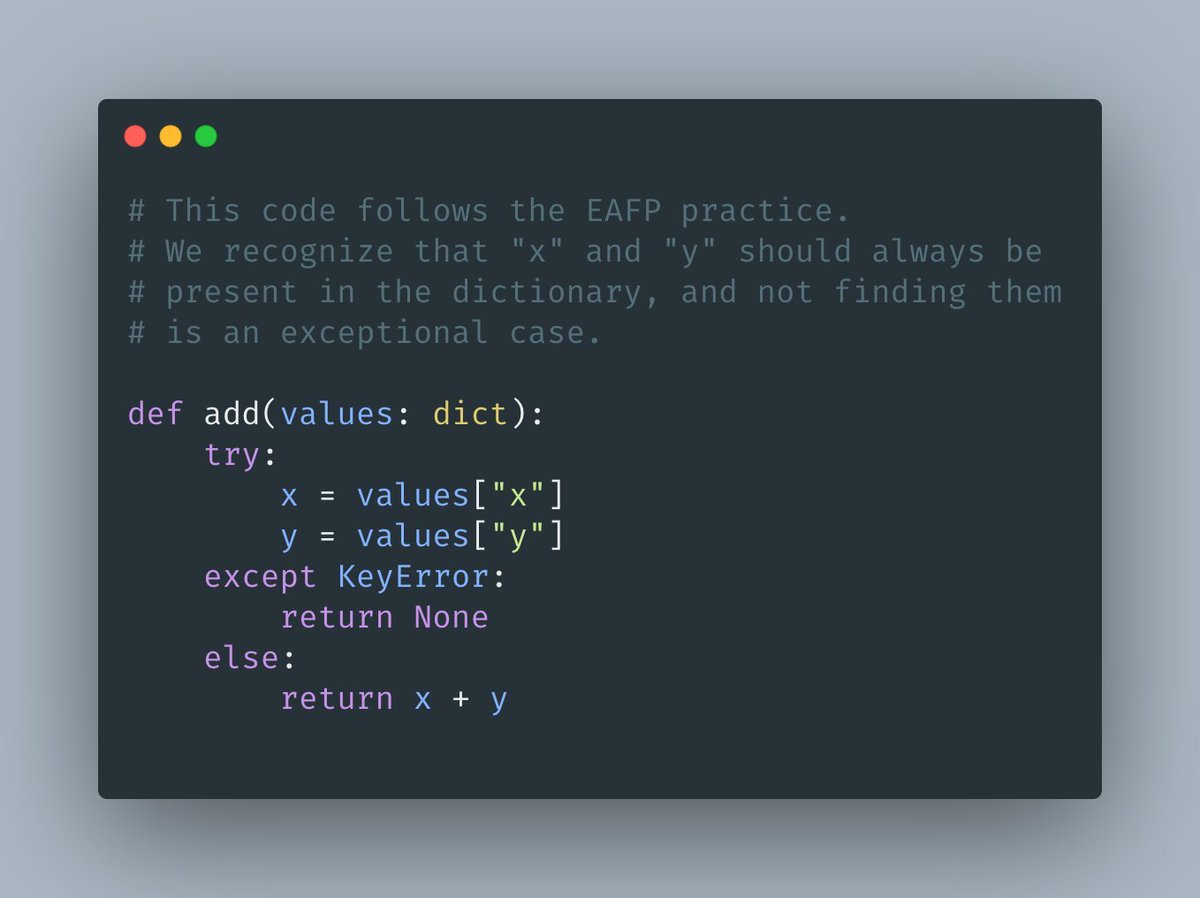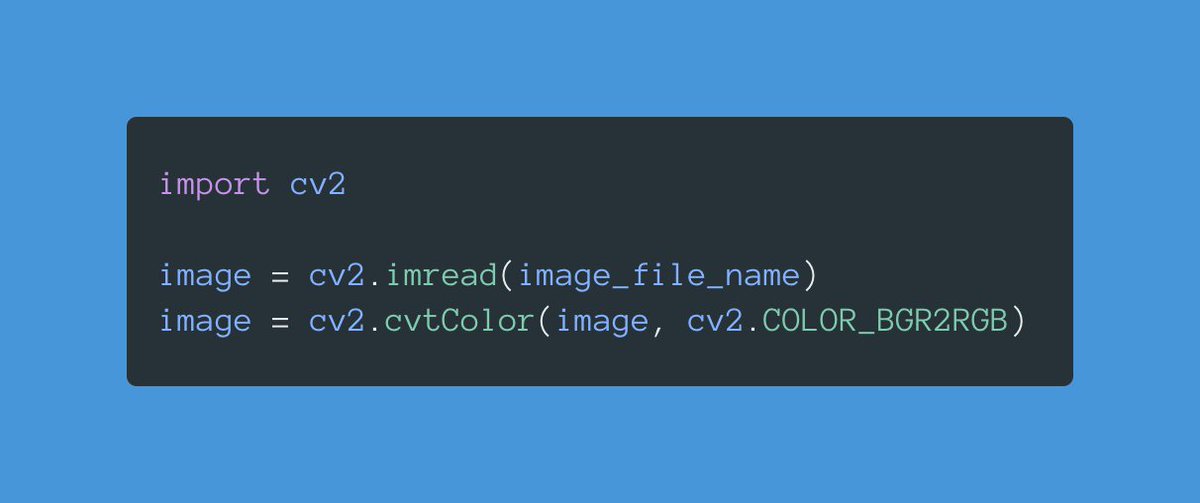
One of the things I love about Python: Duck Typing + EAFP.
A short thread that will change the way you write code.
↓
A short thread that will change the way you write code.
↓
2. The idea behind Duck Typing:
If it looks like a duck, swims like a duck, and quacks like a duck, then it probably is a duck.
In other words: the functionality of an object is more important than its type. If the object quacks, then it's a duck.
If it looks like a duck, swims like a duck, and quacks like a duck, then it probably is a duck.
In other words: the functionality of an object is more important than its type. If the object quacks, then it's a duck.
3. Duck Typing is possible in dynamic languages.
Look at the attached example.
Notice how "Playground" doesn't care about the specific type of the supplied item. Instead, it assumes that it supports the bounce() function.
Look at the attached example.
Notice how "Playground" doesn't care about the specific type of the supplied item. Instead, it assumes that it supports the bounce() function.

4. To make the Playground example work, we don't need inheritance or interfaces.
Code is simpler without a complex hierarchy of types.
Let's see another example.
Code is simpler without a complex hierarchy of types.
Let's see another example.
5. In Python, the len() function returns how many elements are in a list.
This function works with any class that implements a __len__() method, regardless of its type.
This is an example of Duck Typing in action.
But let's see another example.
This function works with any class that implements a __len__() method, regardless of its type.
This is an example of Duck Typing in action.
But let's see another example.

6. The attached example uses __iter__() and __next__() to allow our Computer class to work with the standard for-loop construct.
Again, no need to implement specific types. If it quacks, it's a duck.
Again, no need to implement specific types. If it quacks, it's a duck.

7. Duck Typing is closely related to the "It's Easier to Ask for Forgiveness than Permission" (EAFP) principle.
Look at the two attached samples.
They accomplish the same but use a different principle.

Look at the two attached samples.
They accomplish the same but use a different principle.


8. "Look Before You Leap" (LBYL) principle: It first checks whether "x" and "y" exist, then uses them.
"It's Easier to Ask for Forgiveness than Permission" (EAFP) principle: It assumes that "x" and "y" exist. Raises an exception otherwise.
Python prefers EAFP.
"It's Easier to Ask for Forgiveness than Permission" (EAFP) principle: It assumes that "x" and "y" exist. Raises an exception otherwise.
Python prefers EAFP.
9. Exceptions have been traditionally costly in most programming languages. This is one of the reasons LBYL is so common.
In Python, exceptions are cheap. The overhead of using them is negligible.
In Python, exceptions are cheap. The overhead of using them is negligible.
10. Combining Duck Typing and EAFP makes your code cleaner, explicit and fosters reusability and flexibility without cluttering it with abstractions.
If you aren't familiar with this style, I'd recommend you take a deeper dive.
It may help you to write better code!
If you aren't familiar with this style, I'd recommend you take a deeper dive.
It may help you to write better code!
A good follow up addition to this thread:
On How "try - except" blocks in Python are inexpensive when no exception is thrown.
On How "try - except" blocks in Python are inexpensive when no exception is thrown.
https://twitter.com/mathsppblog/status/1465306608897036296?s=20
• • •
Missing some Tweet in this thread? You can try to
force a refresh




